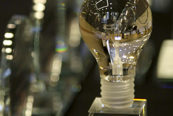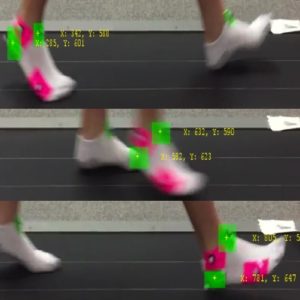by Joe Runge, UNeMed | May 10, 2017
CRISPR is not the technology that will bring about bioengineered weapons of mass destruction, the cure to all diseases or a generation of superhuman children. CRISPR is not the technological endgame for genetic engineering that will save or, possibly, destroy the world.
CRISPR is half that technology.
CRISPR is an enzyme that quickly, precisely and cheaply targets and cuts DNA. Originally discovered in bacteria, CRISPR is short for clustered regularly interspaced short palindromic repeats. It’s a DNA-eating enzyme that serves as a form of immunity for bacteria. Bacteria save a chunk of an invading virus’s DNA and stick it to a CRISPR enzyme. The DNA-loaded enzyme then cruises the bacteria, looking for that same viral DNA. When the enzyme finds the viral DNA, it cuts it up, destroying the virus.
The early applications of CRISPR solve problems caused by small mutations that make genes dysfunctional. The CRIPSR simply cuts out the mutation, which makes the gene function normally. Cutting, however, is only half of the solution. To create flying pigs or genetically modify embryos for designer babies, scientists would need to insert new DNA.
But inserting new DNA is inefficient. Cells, quite reasonably, are on the prowl for foreign DNA, and work hard to keep it out. In the lab, a scientist would need to CRISPR hundreds of cells for a reasonable chance of successfully inserting DNA into just one – and that’s just for a small insertion, a fraction of a gene. To insert or replace a functioning gene, those odds go from pretty long to functionally impossible. Only through a series of baffling experiments can a scientist hope to insert functioning genes into a living cell.
An international collaboration between the University of Nebraska Medical Center and Tokai University may have found CRISPR’s other half.
Channabasavaiah Gurumurthy, Ph.D., an assistant professor of developmental neuroscience at UNMC, and Masato Ohtsuka, Ph.D., an associate professor of molecular life science at Tokai University in Japan, invented a new approach to efficiently insert DNA molecules as large as some genes.
Drs. Gurumurthy’s and Ohtsuka’s invention, which they call Easi-CRISPR, promises to be the improved inserter that pairs with CRISPR’s elegant cutting ability. In mice, Easi-CRISPR inserted large segments of DNA with unheard-of efficiencies of 25 percent, 30 percent or even 100 percent. Easi-CRISPR makes it possible to insert entire functioning genes into the cuts made by CRISPR.
Just as efficient cutting expanded the applications of genetic engineering, efficient insertion further transforms what scientists can do. Instead of using CRISPR to trim out the small mutations, they can overwrite entire genes. Instead of deactivating troublesome genes, they can remove or even add foreign genes to organisms. Genetic engineering applications were once the expensive work of specialty laboratories. With CRISPR and Easi-CRISPR, precision cutting and insertion can become a routine part of molecular biology.
Of course, easy cutting and inserting are not enough to fully realize designer babies and biologic super weapons. Easi-CRISPR and CRISPR make genome editing easier but it’s not enough on its own. A designer baby studio would need a library of eye color, athletic talent and academic achievement genes ready for insertion. To cure a disease, scientists will need to learn how to better use CRISPR to target, edit and replace living human cells. Easi-CRISPR is proof that very brilliant people are working tirelessly to overcome these current and future limitations of genome editing.



















[…] Director of Business Development, tackled the growing concern around the gene-editing tool known as CRISPR/CAS9. The post covers what CRISPR can and can’t do: Primarily it’s great at cutting genetic […]